Public Health > EXAM REVIEW > COMDH II MIDTERM REVIEW - WK. 1-8, CH. 3-7, 9, 11 (GRADED A) Questions and Answer Elaborations. (All)
COMDH II MIDTERM REVIEW - WK. 1-8, CH. 3-7, 9, 11 (GRADED A) Questions and Answer Elaborations.
Document Content and Description Below
S-L has all EXCEPT one of the following characteristics when applied to community oral health. Which one is the EXCEPTION? a. Provides a simple, straight-forward approach to meeting community oral ... health needs b. Makes way for early interactions of dental hygiene students with community partners in need of oral health services c. Provides opportunities to use the interprofessional collaborative practice approach d. Uses a mutual objective formation process to define the S-L objective Provides a simple, straight-forward approach to meeting community oral health needs - The S-L approach adds several layers to the process of meeting the needs of the community such as collaboration, mutual objective formation, and reflection. - This creates a more complex process, which enhances the learning process and can contribute to the sustainability of community programs. - Mutual objective formation is the process of equally balancing the learning and community service aspects of S-L through the development of service objectives, learning objectives, and S-L objectives for the project. You are a consultant to a local nursing home hired to plan and implement an ongoing oral health program with the residents and staff. You contact the local dental hygiene program about possibility collaborating to have students work with you on some of the projects and activities of this program. You are interested in developing a comprehensive program to include daily oral care, oral cancer and dental screening, and treatment consisting of dental hygiene services, restorations, extractions, and fabrication of dentures. The dental hygiene instructor suggests also involving other health professions programs to develop a team than can work cooperatively to develop and implement the various components of this comprehensive program. Students will represent multiple healthcare professions, specifically nursing, occupational therapy, dental hygiene, dentistry, and denturists. At the same time, the instructor suggests using a service-learning (S-L) approach to the various projects that will arise out of this program. All of the following EXCEPT one are true in relation to developing a risk management plan for this project. Which one is the EXCEPTION? a. During provision of treatment, students will require direct supervision by faculty. b. Supervising faculty must meet the legal requirements that regulate the practice of their profession. c. The plan must be in the process of being reviewed by all parties before implementing a project. d. Procedures should be addressed to reduce risks to students, nursing home residents, faculty, and staff. The plan must be in the process of being reviewed by all parties before implementing a project. - Review of the risk management plan must be complete and all parties must sign it before implementing a project. - To begin projects while the plan is still under review runs the risk of problems arising before everyone has signed to indicate agreement with the procedures outlined in the plan. - Other statements are true. In 2011 the American Dental Hygienists' Association (ADHA) commissioned a comprehensive survey called (a/an) ___________ to identify opportunities and constraints that could impact the future of the profession. a. environmental scan b. global initiative c. resource evaluation d. overview Environmental scan - This type of comprehensive assessment is known as an environmental scan and is completed for the purpose of helping an organization envision, articulate, and plan for inevitable changes that can influence its future outlook. The future of dental hygiene is in the _________ workforce. a. solo private practice b. group private practice c. hospital-based d. public health Public health - Public health research and educational initiatives have made it clear that the future of dental hygiene is in the public health workforce and the dental hygiene curricula must prepare future graduates to work in the changing public health environment. Interprofessional collaborative practice (ICP) will necessitate a shift from profession-specific education and training to educating health professions students in an interprofessional model, referred to as: a. interprofessional education (IPE). b. healthcare exchanges (HCEs). c. models for community development (MCDs). d. collaborative education (CE). Interprofessional education (IPE). - IPE will prepare graduates to practice in such a way that various disciplines can work together in communities to strengthen identified community health issues that cut across the disciplines. Which of the following types of learning experiences works best according to educational researchers such as John Dewey, Kurt Lewin, Jean Piaget, and Carl Rogers? a. Lecture b. Learning circles c. Hands-on d. Reading Hands-on - According to these educational researchers, hands-on learning was at the center of the best learning experiences. The ADHA will be challenged to develop the next generation of leaders, prepare adequate numbers of qualified dental hygiene faculty, and create new forms of volunteerism and community engagement for retirement because of which of the following change-drivers impacting the dental hygiene profession? a. Future opportunities for dental hygienists b. Growth of for-profit schools and corporate education c. Aging population d. Aging workforce Aging workforce - The largest and most influential generation will be retiring over the next decade, including from dental hygiene and dental hygiene education, leaving the workforce with a wealth of experience and seeking ways to remain active in the workforce and their communities after retirement. Experiential learning represents an umbrella term that refers to various models of learning in which _________ governs the educational process for the student. a. experience b. examination scores c. lecture d. reading textbooks Experience - Experiential learning takes place in authentic situations. - Experiential learning can be used to change the focus of learning, shifting it from the confines of the classroom to the community while maintaining a key focus on adding to the student's knowledge base. For service-learning, what the community partner wants from the dental hygiene students is referred to as the __________. A course objective is selected as the __________ for the service-learning experience. a. service objective (SO); service objective (SO) b. service objective (SO); learning objective (LO) c. learning objective (LO); service objective (SO) d. learning objective (LO); learning objective (LO) Service objective (SO); learning objective (LO) - The service objective (SO) is a uniquely expressed need that flows directly from the mission and purposes of the collaborating partner. - A course objective is selected as the learning objective (LO) for the service-learning experience. - Dental hygiene students' course objectives are academically grounded and come directly from the course syllabus. The service objective (SO) and the learning objective (LO) are purposefully combined to form the: a. service-learning objective (S-LO). b. clinical rotation. c. practicum. d. clinical rotation. Service-learning objective (S-LO). - A service objective (SO) and a learning objective (LO) are used to create a service-learning objective (S-LO). - Working together to combine the SO and LO in creating the S-LO is critical to the service-learning process because it supports the integrity of the service-learning experience and illustrates its mutually beneficial nature. Which of the following correctly depicts the steps in the service-learning process from start to finish? a. Collaboration, preparation, orientation, reflection, evaluation b. Collaboration, orientation, preparation, reflection, evaluation c. Collaboration, reflection, orientation, preparation, evaluation d. Collaboration, evaluation, orientation, preparation, reflection Collaboration, orientation, preparation, reflection, evaluation - The correct sequence is collaboration, orientation, preparation, reflection, and evaluation. With service-learning the _________ can initiate the request for collaboration. a. faculty member, community partner, or student b. faculty member or student, but not the community partner c. faculty member or community partner, but not the student d. community partner or student, but not the faculty member Faculty member, community partner, or student - With traditional community-service projects, dental hygiene faculty members have typically initiated communications leading to a community-service experience for the students. - However, with service-learning, the faculty member, community partner, or student can initiate the contact and request. Which of the following steps in the service-learning process is illustrated by the process of mutual objective formation? a. Reflection b. Preparation c. Collaboration d. Orientation Collaboration - Collaboration is also involved in the development of the S-LOs, as illustrated by the process of mutual objective formation. - The expectation of equally balanced interests is a classic feature of service-learning. Brainstorming activities are part of which of the following steps in the service-learning process? a. Evaluation b. Collaboration c. Preparation d. Orientation Preparation - Preparation involves brainstorming activities, identifying roles, developing action plans and contingency plans, and setting time lines. - Diligent skill sets, including leadership, listening skills, and the assessment of community needs, are essential to preparation. Formative evaluation involves examining the service-learning project while it is ongoing. Summative evaluation involves a formal end-product review of the service-learning project. a. Both statements are true. b. Both statements are false. c. The first statement is true, the second statement is false. d. The first statement is false, the second statement is true. Both statements are true. - Making concrete plans to use both methods helps to ensure permanence or institutionalization of the service-learning project. The movement to position oral health as an integral part of overall health is supported by research. Interprofessional collaborative practice (ICP) requires health professionals to enter the workforce ready to integrate into teams of mixed healthcare professionals. a. Both statements are true. b. Both statements are false. c. The first statement is true, the second statement is false. d. The first statement is false, the second statement is true. Both statements are true. - Research suggests that higher education health professions programs incorporate interprofessional education (IPE) into their curricula through collaboration. Risk management suggests that challenges or exposures can be managed through thoughtful preplanning and organization, because planning for service-learning is not devoid of situational challenges. a. Both the statement and reason are correct and related. b. Both the statement and reason are correct but NOT related. c. The statement is correct, but the reason is NOT. d. The statement is NOT correct, but the reason is correct. e. NEITHER the statement NOR the reason is correct. Both the statement and reason are correct and related. - Managing challenges and resources to maintain safety and quality is critical to be able to sustain service-learning experiences and ongoing relationships with community partners. [Show More]
Last updated: 10 months ago
Preview 1 out of 126 pages
Instant download

Buy this document to get the full access instantly
Instant Download Access after purchase
Add to cartInstant download
Reviews( 0 )
Document information
Connected school, study & course
About the document
Uploaded On
Jul 24, 2023
Number of pages
126
Written in
Additional information
This document has been written for:
Uploaded
Jul 24, 2023
Downloads
0
Views
23

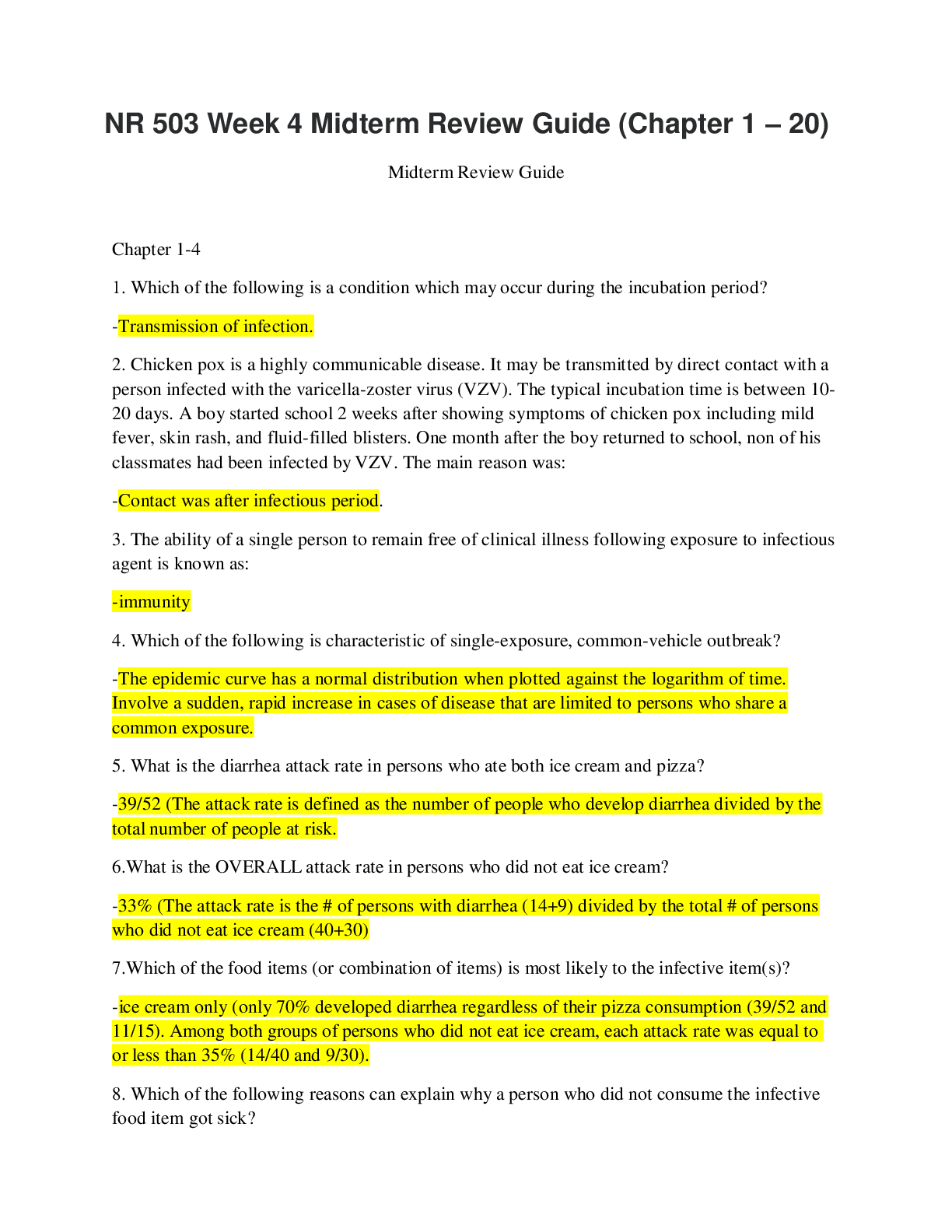
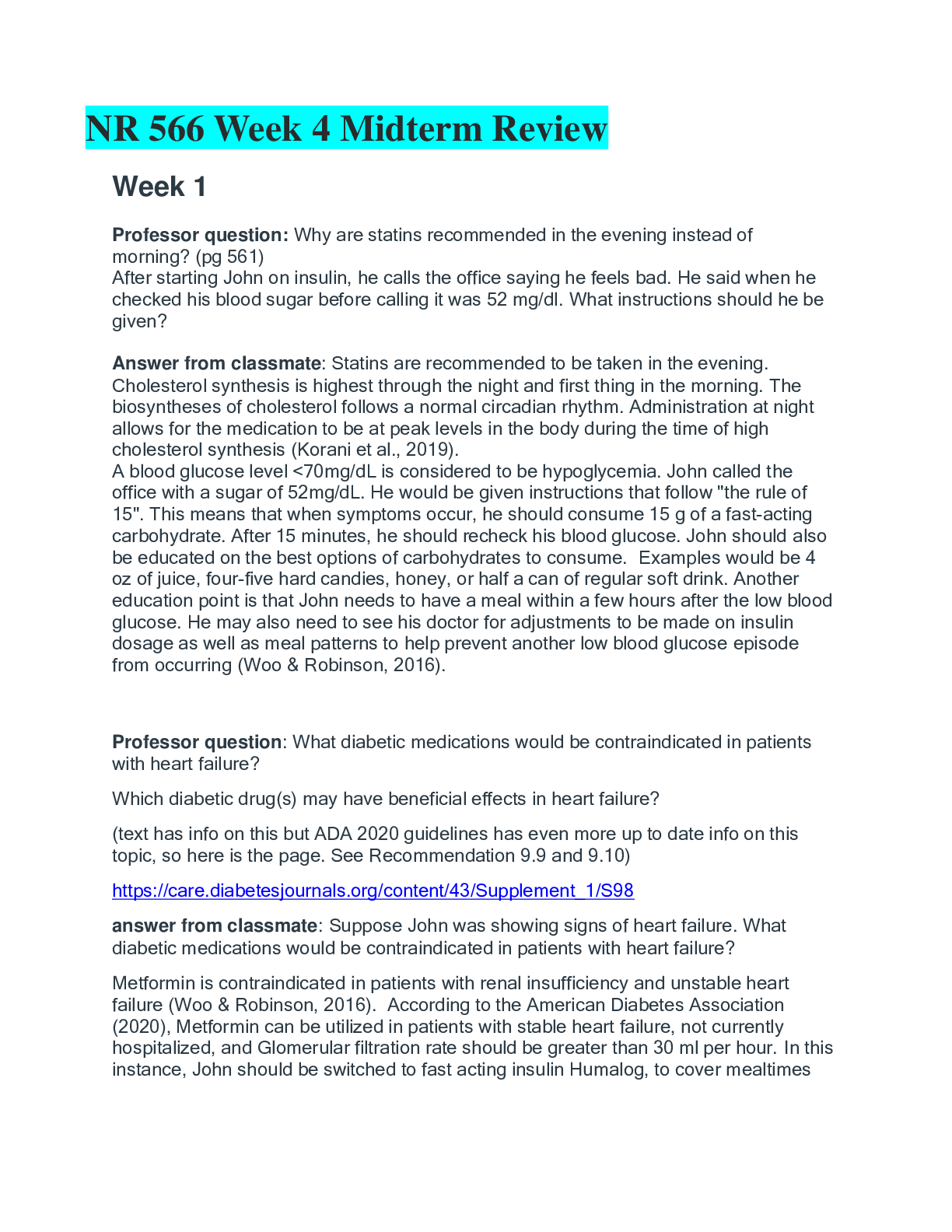
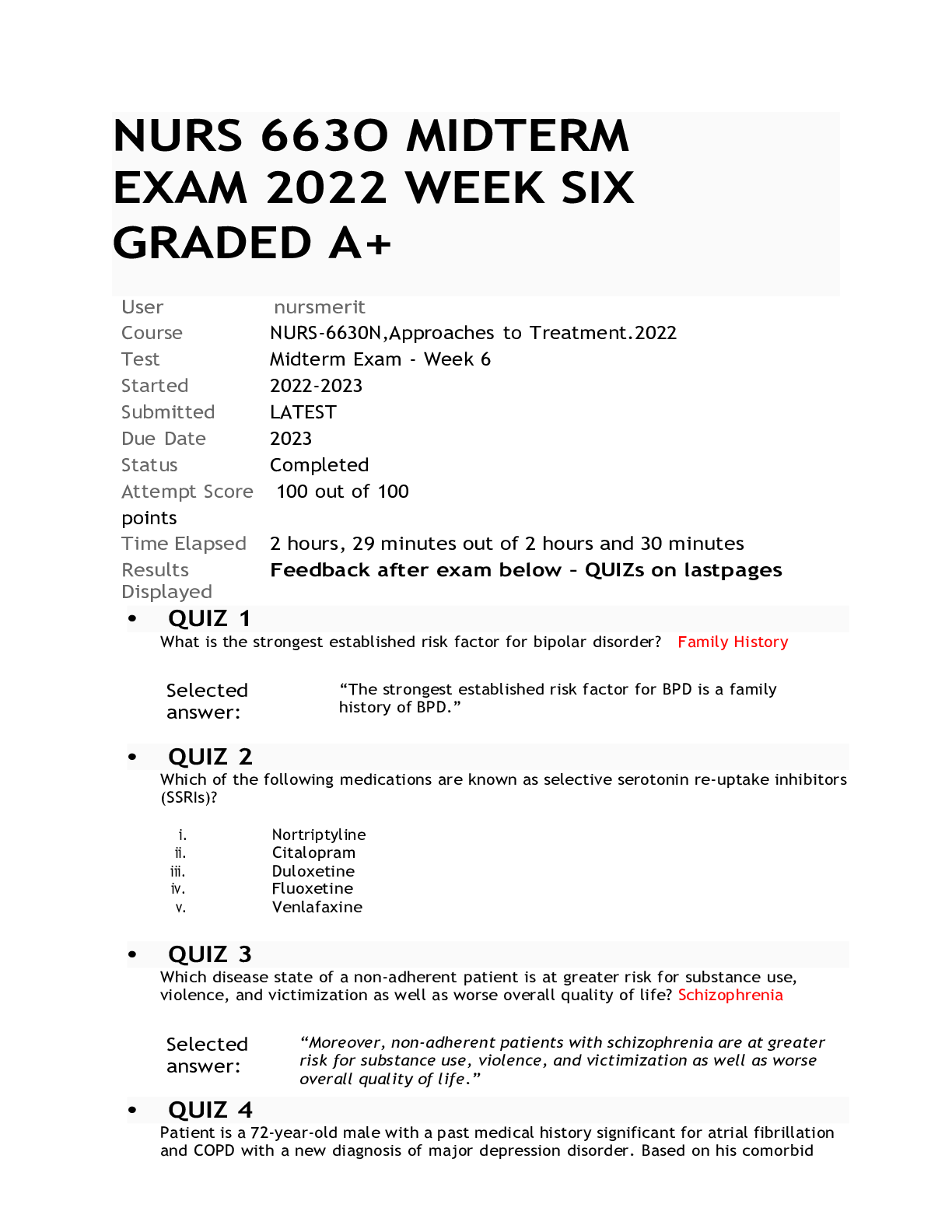
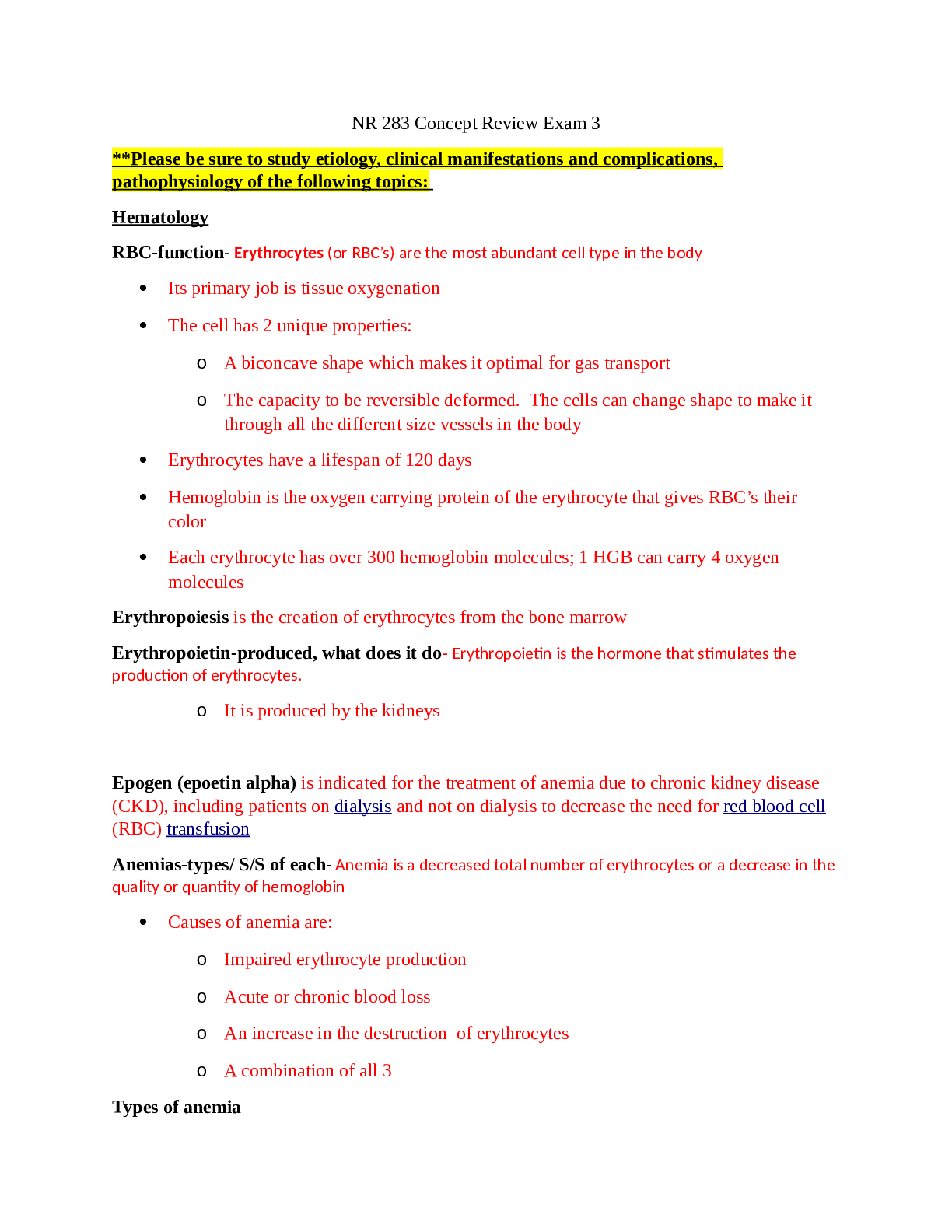
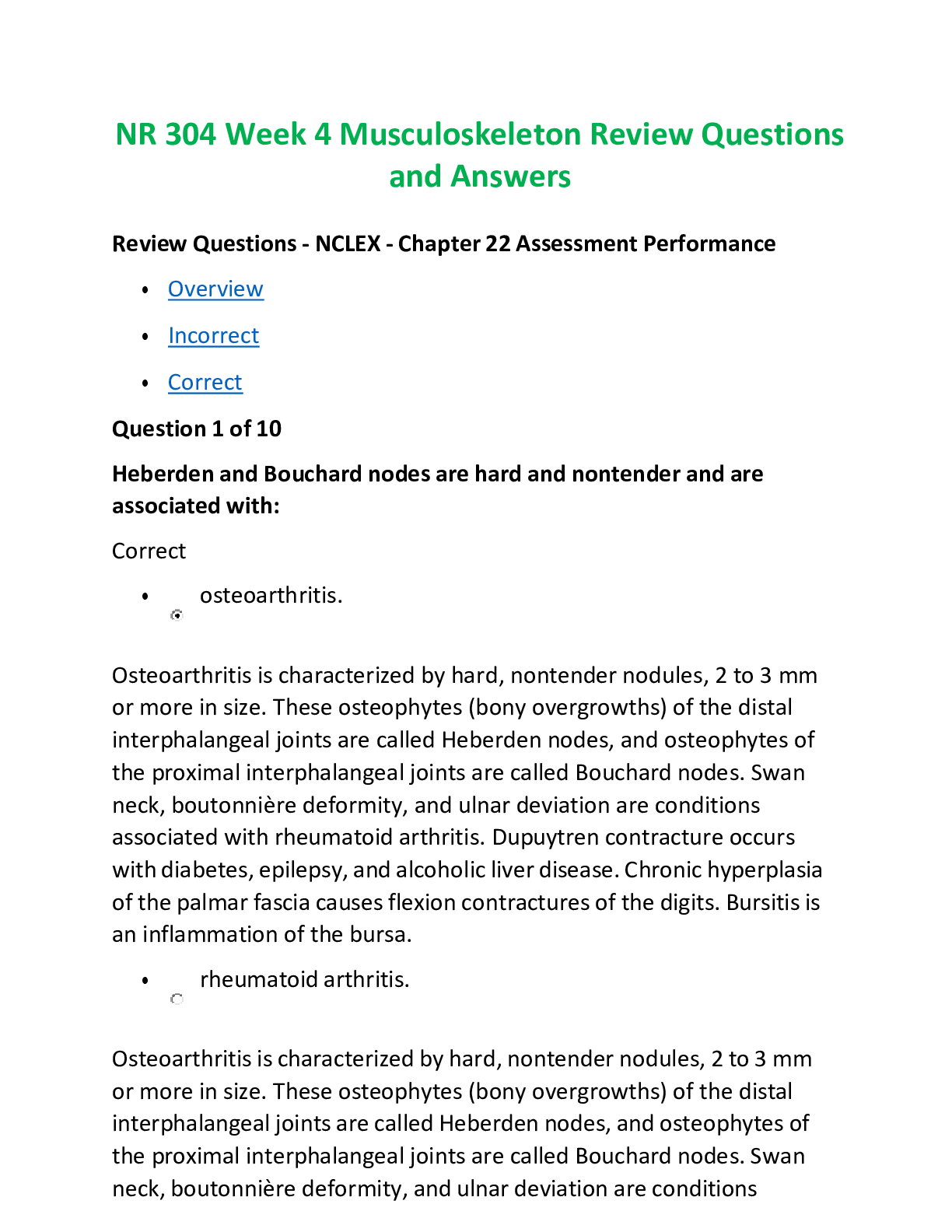
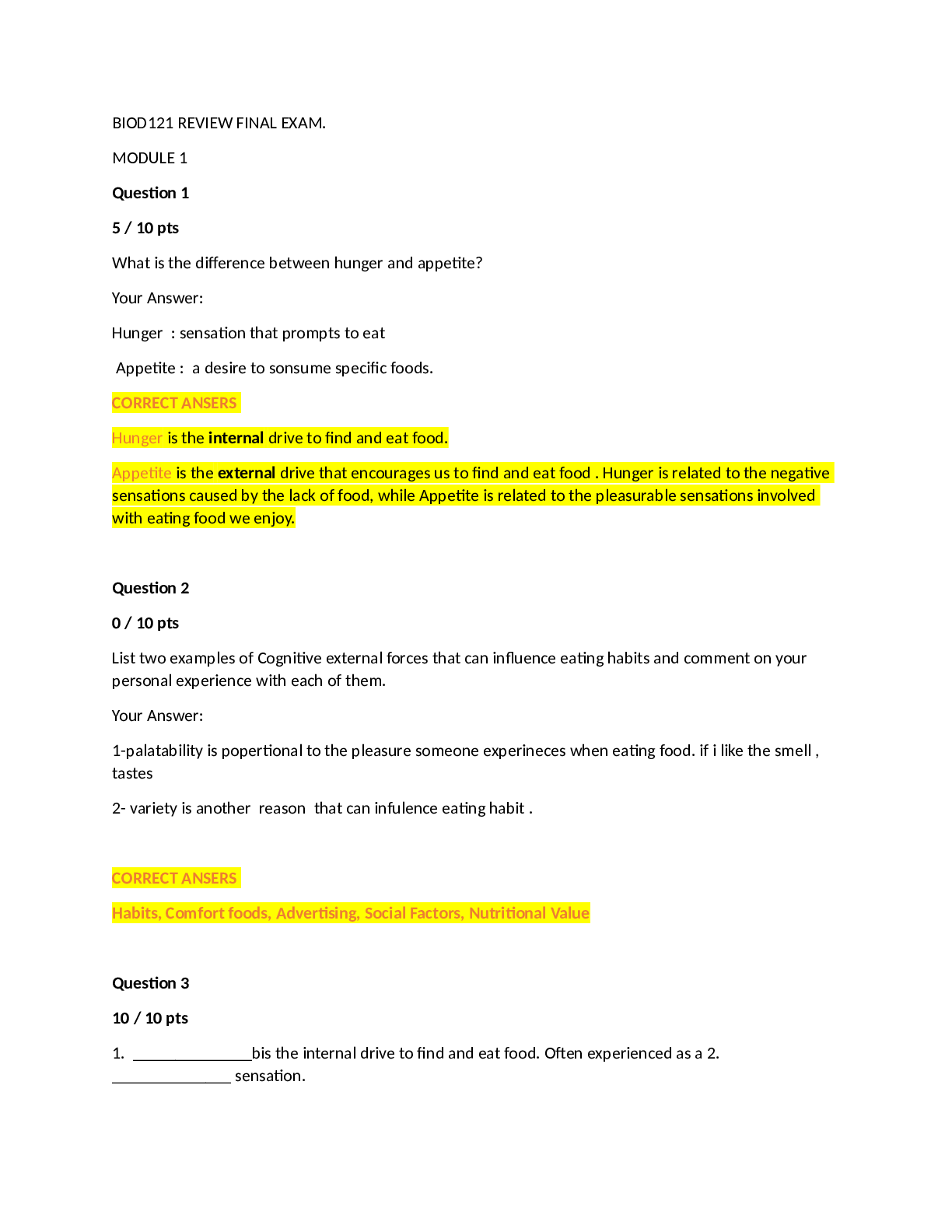

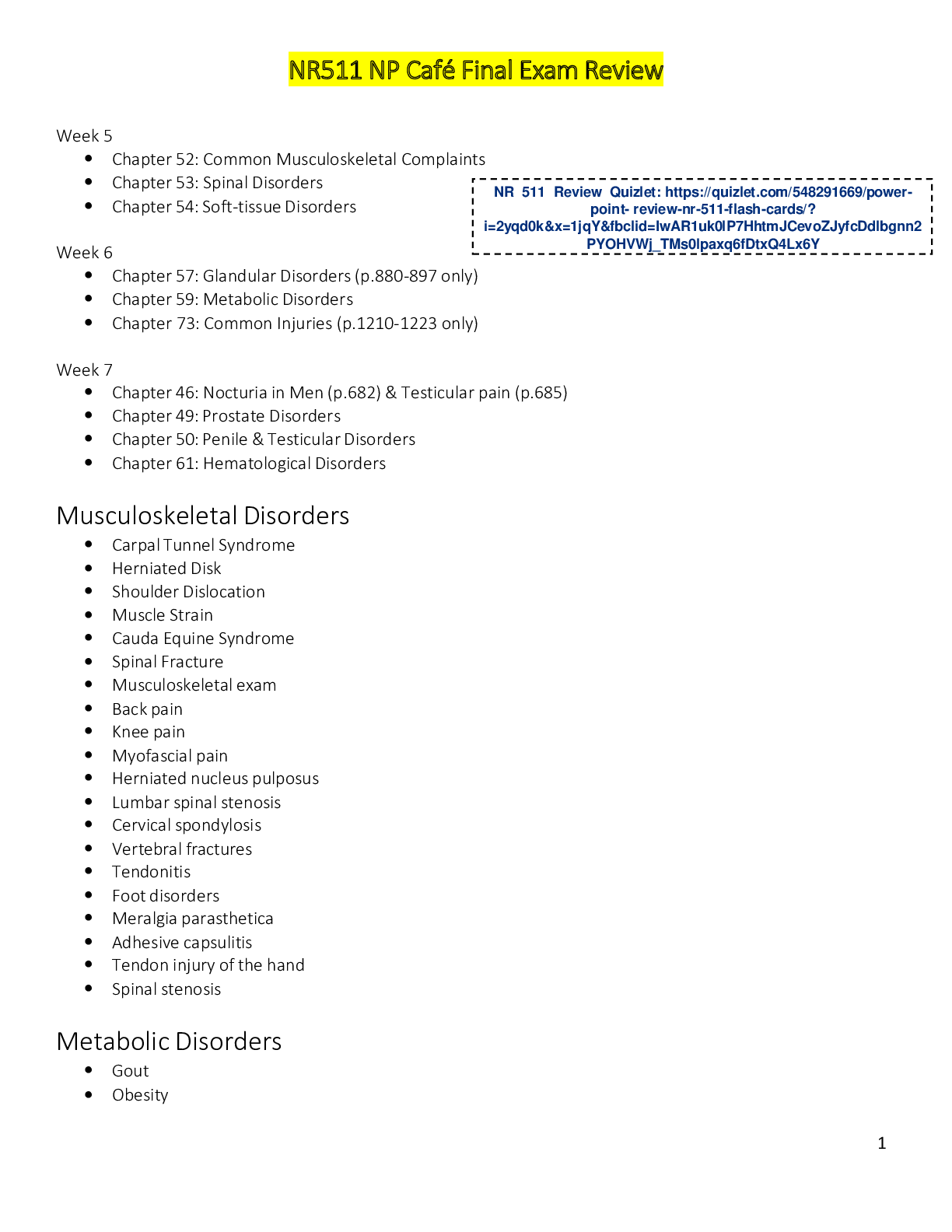
.png)
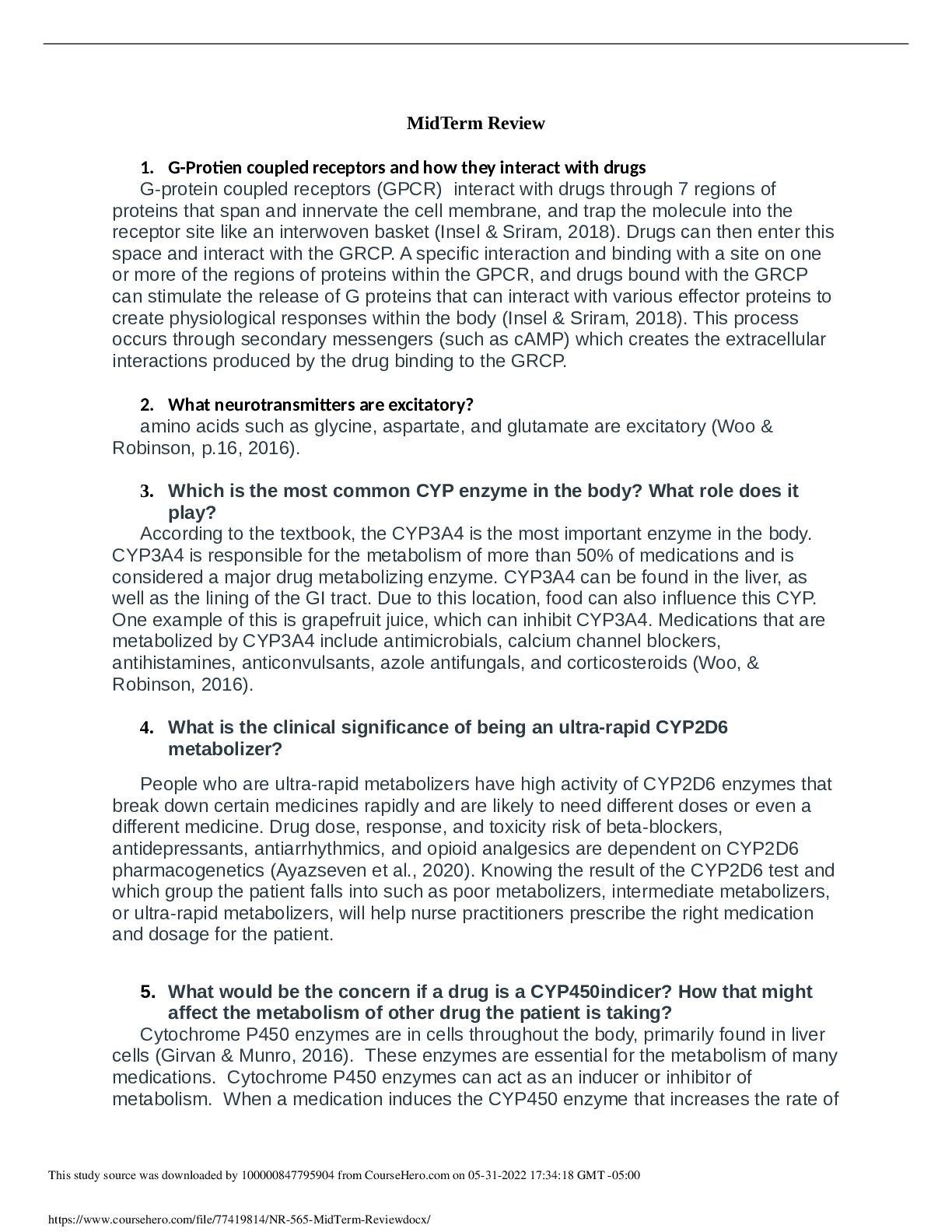
.png)
 Questions and Answers 100% Verified.png)
 Questions and Answers.png)



